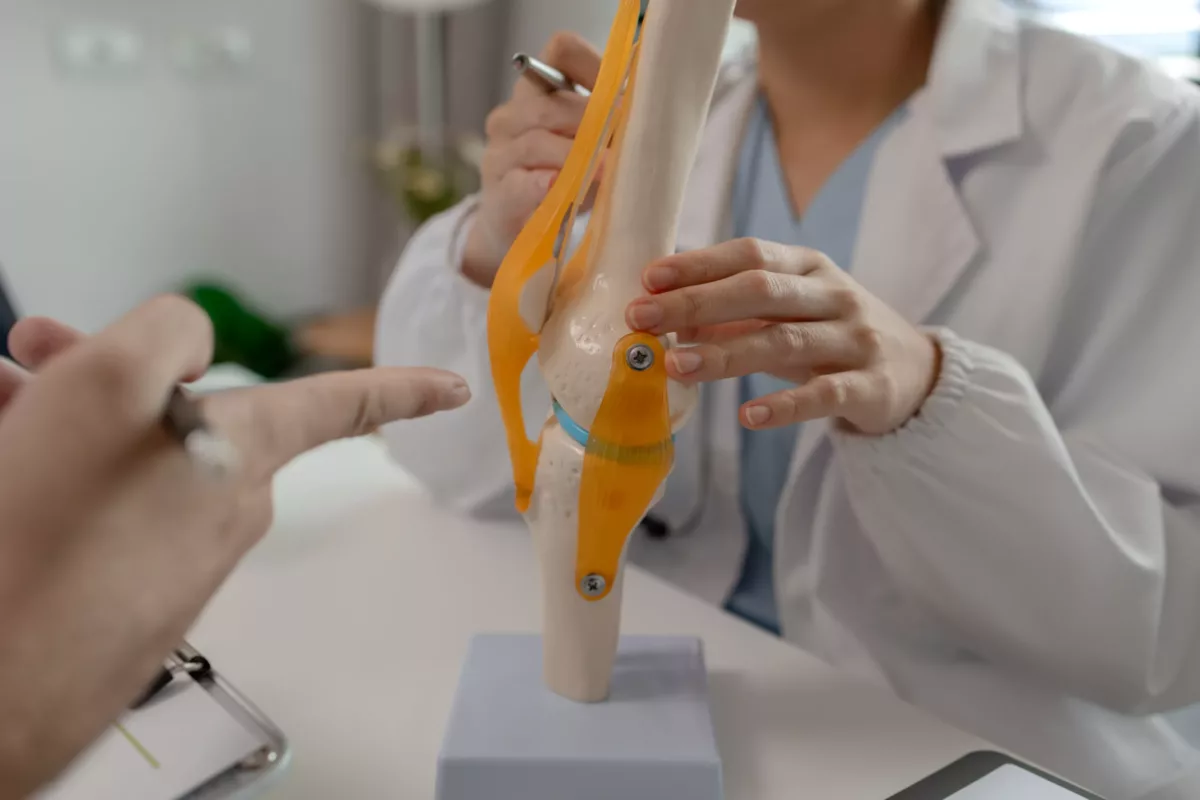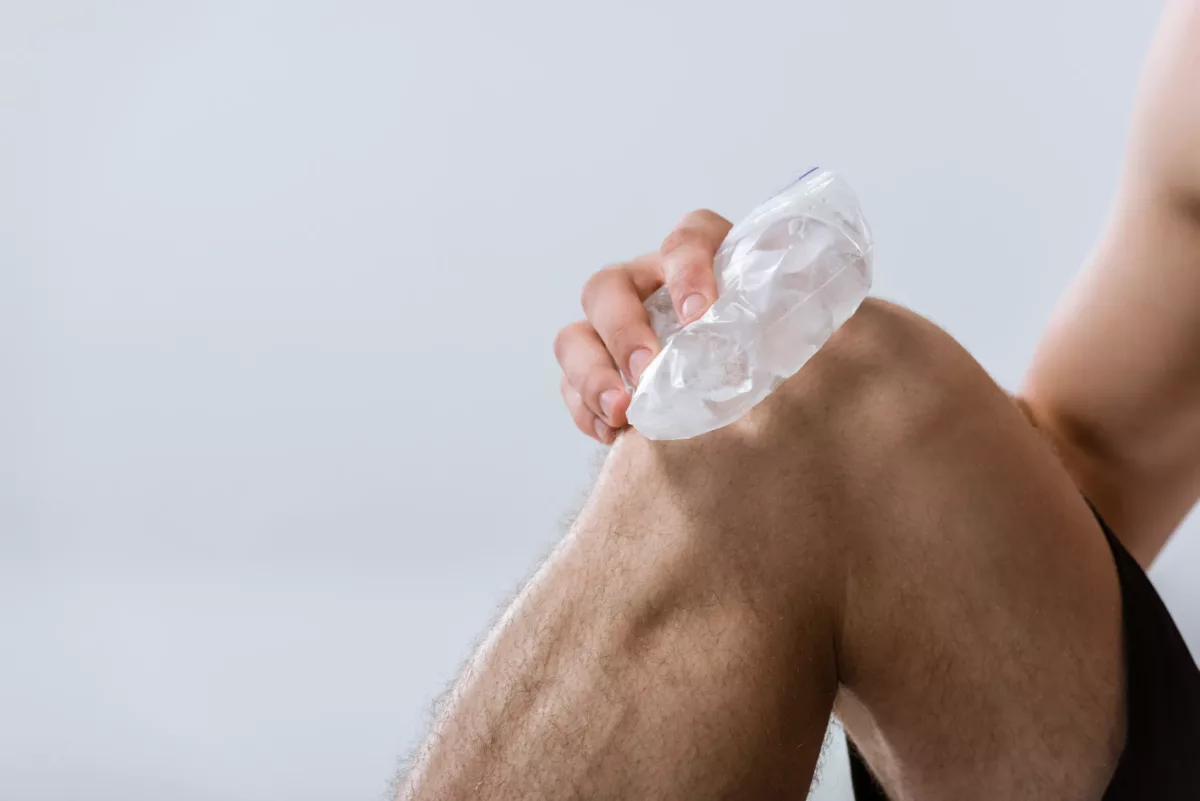A tear or sprain of the anterior cruciate ligament (ACL) is called an ACL injury. This ligament is one of the strongest bands of tissue that links the thigh bone (also called femur) to the shinbone (tibia). In most cases, ACL injuries occur during sports that involve sudden and frequent starts, stops, direction changes, jumping, and landing (including basketball, football, soccer, downhill skiing, and others).
When an ACL injury happens, you may feel a “popping” sensation in the knee. People with ACL injuries may notice swelling of the knee and may feel unstable. Moreover, severe pain may make it difficult to bear weight on the knee.
The treatments usually include rest, rehabilitation, exercises to recover strength and stability, or surgery to replace the torn ligament. To reduce the risk of ACL injury, it is required to have a proper training program.
Symptoms
People with ACL injuries usually experience the following symptoms. For example:
- Fast swelling
- Loss of range of motion
- Instability
- Severe pain
- Inability to continue the activity
- A loud popping sound in the knee
Go to the nearest emergency room or call 911 if any of the previous symptoms occur. However, the knee joint is a complex structure that involves bones, ligaments, tendons, and other tissues that normally work together. That’s why it is important to get an accurate diagnosis and proper treatment.
Causes
Strong tissue bands that connect one bone to another are called ligaments. The ACL is one of two ligaments that cross the middle of the knee and link the thighbone to the shinbone. This ligament is responsible for stabilizing the knee joint. In most cases, people experience an ACL injury during sports or fitness activities that put extra pressure on this ligament. Check below for some causes of ACL injuries:
- Suddenly changing direction or slowing down
- Pivoting with the foot
- Landing awkwardly from a jump
- Starting or stopping suddenly
- Getting a collision to the knee (such as a football tackle)
Damage to the ACL may lead to a partial or complete tear of the tissue. However, mild injuries usually cause the ligament to stretch but leave it intact.
Risk Factors
There are multiple factors that could elevate your risk of getting an ACL injury. Check some examples below:
- Sex – Women are more prone to develop an ACL injury than men. Experts think it happens due to anatomical differences, muscle strength, and hormones.
- High-intensity sports – These include soccer, football, basketball, gymnastics, and others.
- Poor conditioning
- Faulty movement patterns (such as moving the knee inward during a squat)
- Footwear that does not fit properly
- Poorly maintained sports equipment (including ski bindings that are not adjusted)
- Playing on an artificial turf
What Are The Potential Complications of ACL Injury?
Those who have an ACL injury are at increased risk of developing osteoarthritis in the knee. However, arthritis may happen even after surgery to repair the ligament.
In addition, there are a lot of factors that increase the risk of arthritis. For example, the severity of the first injury, trauma of the knee joint, training intensity after treatment, and others.
How to Prevent ACL Injury?
To reduce the risk of ACL injuries, it is advised to consult with a sports medicine physician, physical therapist, or athletic trainer for a proper training program. Check below for some programs that may help reduce the risk of ACL injuries:
- Exercises to strengthen the core – The core includes the hips, pelvis, and lower abdomen. The goal of these exercises is to avoid moving the knee inward.
- Training and exercise emphasizing proper techniques – It is very important to keep the knee position when jumping or landing from jumps.
- Exercises to strengthen leg muscles – Physicians usually recommend hamstring exercises to improve overall balance and leg muscle strength.
- Training to improve technique, especially during pivoting and cutting movements.
Previous exercises usually help to reduce the risk of ACL injuries in women athletes.
Additionally, it is advised to wear footwear and padding that are appropriate for the sport you practice. For instance, if you downhill ski, you should make sure that your ski bindings are properly adjusted. It helps ensure that skis will be released properly when you fall.
However, a knee brace usually does not lower the risk of an ACL injury.
Diagnosis
The diagnosis of the ACL injury usually begins with a physical examination to check the knee for abnormalities linked with the condition. These include swelling, tenderness, and comparison with the healthy knee. During the examination, physicians may move the knee in different positions to determine the range of motion and joint function.
While ACL injury is often diagnosed based only on physical examination, in some cases, doctors may perform some imaging tests to confirm the condition. The following tests may also exclude other conditions that cause similar symptoms and determine the severity of the injury. Check some examples below:
- X-rays – This imaging test is used to exclude a bone fracture because it does not show soft tissue such as tendons or ligaments.
- MRI (magnetic resonance imaging) – It uses a magnetic field and radio waves to make detailed pictures of the hard and soft tissue in the body. An MRI scan can show the extent of ACL injury and damage to other knee tissues (such as cartilage).
- Ultrasound – This test uses sound waves that help visualize internal structures. Usually, it is used to check for injuries in the tendons, muscles, and ligaments of the knee.
Treatment
First aid care may lessen pain and swelling right away after a knee injury. Check below for an effective model of self-care at home:
- Rest – Generally, it is a very important part of healing. Moreover, you should limit weight-bearing on the knee.
- Ice – Apply ice to your knee for at least 20 minutes every 2 hours.
- Compression – It is recommended to use an elastic bandage or compression wrap around the knee to limit movement.
- Elevation – You should raise your knee while lying down. To do that, you can use 2-3 pillows.
Surgery
Healthcare professionals recommend surgery in the following cases. For example:
- The athlete wants to continue sports, especially those that involve jumping, cutting, or pivoting.
- Injury affects more than one ligament or the fibrous cartilage in the knee.
- Trauma causes the knee to buckle during routine activities.
Usually, during reconstruction, surgeons remove the damaged ligament and replace it with a tendon (a tissue that links bones to muscles). The replacement tissue is often called a graft. They often take this graft from another part of the knee or from a deceased donor.
Soon after surgery, patients should resume the rehabilitation therapy that normally begins before surgery. In most cases, ACL reconstruction helps restore function and stability to the knee.
In general, there is no set time for athletes to return to sports. Some studies showed that roughly 30% of athletes experience the same injury to the opposite knee within 2 years. The risk of re-injury decreases with a longer recovery time.
Frequently Asked Questions
Does ACL heal on its own?
The ACL can heal itself only if the injury is mild. However, a complete tear of the ACL requires surgery to reconstruct it and a recovery that may last for months, especially if you are planning to return to sports.
Can a complete ACL tear heal without surgery?
Unfortunately, nonsurgical options to treat a complete ACL tear are not available. If you suspect you are experiencing an ACL injury, immediately contact your healthcare professional.
What are the possible complications of an ACL injury?
Generally, complications are caused by the condition itself and surgeries to reconstruct the ACL. Check below for some examples:
- Infections
- Stiffness
- Graft failure
- Re-injury
- Knee instability
- Osteoarthritis
- Meniscus tears
This document does not contain all possible complications of an ACL injury. If you have additional questions, ask your healthcare provider.




